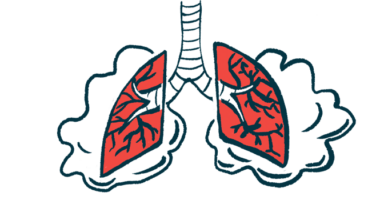Environment plays big role in lung function decline in CF children
Traffic-related air pollution, socioeconomics found to be significant risk factors

Exposure to traffic-related air pollution is an important predictor of early lung function decline in children and adolescents with cystic fibrosis (CF), a study has found.
Community deprivation — reflecting poverty, housing, income, education, and health insurance coverage — was also a significant predictor of this decline in young CF patients.
When these two risk factors and green space availability were combined with traditional demographic and clinical factors, the decline in lung function was predicted better than the conventional factors alone, according to researchers.
The study, “Built environment factors predictive of early rapid lung function decline in cystic fibrosis,” was published in the journal Pediatric Pulmonology.
Built environment refers to human-made design of communities
CF is an inherited genetic disease marked by the buildup of abnormally thick mucus that causes damage to various organs, including the lungs, intestines, pancreas, and liver. Evidence suggests that lung function decline due to CF can only be partially explained by genetic defects, indicating that environmental factors may also play a role.
The term built environment refers to the human-made design of communities where people live, work, and play. This includes neighborhoods, homes, workplaces, schools, shops, sidewalks, streets, green spaces, and buildings.
It is thought that environmental exposures and community characteristics of the built environment are associated with lung function decline in people with CF. Such factors include air pollution, a lack of green spaces, and neighborhood characteristics, such as poverty, education, and healthcare access.
However, whether risk factors in the built environment can predict lung function decline during adolescence and early adulthood in people with CF has yet to be addressed.
“We hypothesized that including built environmental risk factors would yield more accurate lung function prediction and improved fit to the data, compared to relying only on demographic/clinical surveillance characteristics,” the researchers wrote.
The team collected data on 173 CF patients (52.6% male), ages 6-20 years, who received care at the Cincinnati Children’s Hospital Cystic Fibrosis Center from 2012 to 2017. Eligible participants all had records of valid lung function assessments.
This study identifies the combined and actual effects of stressors and multiple pollutants inherent in the built environment of children living with CF.
Residential addresses were converted to geographic coordinates, which were used to derive four key measures of the built environment considered to influence lung function decline.
These factors included elemental carbon attributable to traffic sources (ECAT), a measure of traffic-related air pollution, percentage of greenspace near homes, drivetime to a CF center, and a neighborhood deprivation index (extent of poverty, vacant housing, assisted income living, education, income, and health insurance coverage).
Most patients developed a Pseudomonas aeruginosa lung infection during follow-up, and nearly half were diagnosed with Methicillin-resistant Staphylococcus aureus (MRSA).
Deprivation index, green space, and ECAT exposures, alongside traditional demographic and clinical predictors, were significantly better at predicting lung function than clinical and demographic characteristics alone. These findings were adjusted for sex, Medicaid insurance use, CF-related diabetes, body fat content, and lung infections.
Individually, ECAT was associated with a more rapid decline in lung function when adjusted for other environmental exposures and demographic and clinical factors. Although not statistically significant, the deprivation index was linked to lung function decline. Green space was not associated with rapid lung decline.
Maps show combined impact of built environment factors on lung function
These data were then mapped onto the city of Cincinnati and surrounding suburban areas. The maps showed the combined additive impact of these built environment factors on lung function decline, which occurred mainly in regions in the city’s core that are close to truck traffic and are highly deprived.
“These maps not only reinforce our findings that patients living in areas with high ECAT and high deprivation experience a greater decline in lung function,” the researchers wrote, “but importantly, highlight that patients experiencing high ECAT are often living in highly deprived communities.”
Mapping onto Hamilton County, which surrounds Cincinnati, showed areas with the largest impact on lung function, corresponding to elevated ECAT and deprivation index values and fewer green spaces. This included the area next to the Ohio River, which encompassed a higher density of truck/bus routes and in lower elevations than non-riverfront areas.
“This study identifies the combined and actual effects of stressors and multiple pollutants inherent in the built environment of children living with CF,” the researchers concluded.
“The individualized predictive mapping from this study highlights how clinicians can utilize these characteristics of a single CF patient alongside routinely collected demographic and clinical care data to monitor lung function and risk of rapid decline,” they added.









